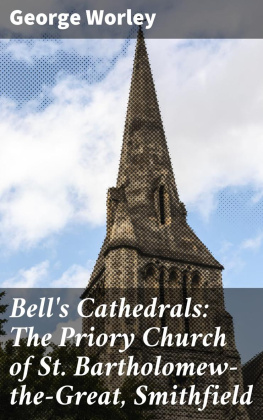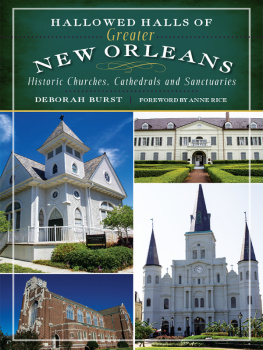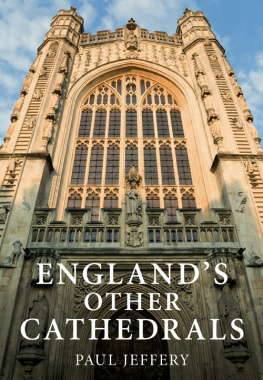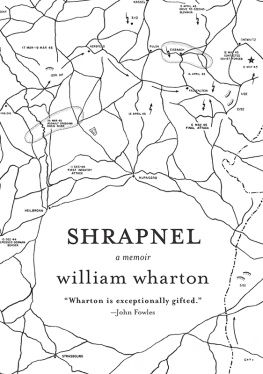FOREWORD
Quis funera faudo Explicet, aut possit lacrymis aequare Labores? Urbs antiqua ruit, fnultos domint a per annos; Plurima perque vias sternuntur inertia passim. Corpora, perque domos, et religiosa deorum Limina!
(Virgil, neid, II. v. 361.)
Surviving the ancient wars and revolutions in this, "the Cockpit of Europe," the great examples of architecture of the early days of France remained for our delight. The corroding fingers of time, it is true, were much more merciful to them, but certainly the destroyers of old never ventured to commit the crimes upon them now charged against the legions of the present invader. These fair towns of Picardy and Champagne are sacked, pillaged and burned even as were the beautiful Flemish towns of Ypres, Malines, Termonde, Dixmude, and Dinant on the Meuse....
Never again shall we enjoy them: the chalices are broken and the perfume forever vanished....
The catastrophe is so unbelievable that one cannot realize it. The Seven Churches of Soissons, Senlis, Noyon, Laon, Meaux, Rheims, St. Remi; these such as man probably never again can match, are either razed to the foundations, or so shattered that it will be impossible to restore them.
It is said that the Imperial Government has promised to rebuild these Gothic masterpieces....
One cannot trust one's self to comment upon this announcement.
Imagine these sacred ruins.... Rheims!... Rheims can never be restored to what it was before the bombardment. Let it rest thus.... A sacred ruinthe scarred, pierced heart of France!
Likewise "these fair sweet towns" of the middle ages; these wonderful little streets and byways, filled with the gray old timbered houses, "old in Shakespeare's day." Up to the outbreak of the war there were many of these throughout France, in spite of the wave of modernity which resulted in so much so called town improvement.
In Arras the two old Squares, the Grand Place and the Petit Place, survived until destroyed by bombs in 1914. Those double rows of Ancient Flemish gables, and the beautiful lace like tower of the Town Hall cannot be forgotten, although they are now but calcined beams and ashes. Between the Seine and the Flemish frontier lay a veritable storehouse of incomparable architectural monuments. Of these Rouen, with its famous Cathedral, is happily out of reach of the guns of the invader, and one hopes out of danger. Beauvais likewise has not yet suffered, nor Chalons, with its great church of St. Loup and St. Jean, but the Cathedral and the town of Noyon have been leveled, and the gray walls of incomparable coucy-le-Chteau, "that greatest of the castles of the Middle Ages," whose lords arrogantly proclaimed "Roi ne suys, ne prince, ne duc, ne conte aussi; je suys le Sire de Coucy," have vanished forever from the heights under the wanton fire of the invaders' shells, and twenty thousand pounds of powder placed in the walls and exploded in revenge on the day of the retreat (April 1917).
Amiens, for some reason, has been spared, but it too may yet receive its baptism of fire, even as Rheims. Amiens and Rheims! Never were there such miracles of art as shown in these temples! Rheims is now a ragged ruin of roofless leaning walls. So Amiens, miraculously preserved, is now the greatest existing example of Christian architecture in the world.
In the following chapters I have quoted extracts from accounts written by eyewitnesses of acts committed by the invader in the devastated towns of France. I am not responsible for these statements, nor can I vouch absolutely for their truth, or correctness. I give them for what they are worth as part of the settingthe frame work of the pictures I have made of the noble, now vanished monuments which can never be replaced....
If I have betrayed bitter feeling it is because of their destruction by whomsoever accomplished.
"Woe be unto him from whom offense cometh."
The Author.
Greenwich, Conn.
May 1917.
0027m
ARRAS
I t was half-past six o'clock on a summer's morning, and a deep-toned bell in the cathedral sounded over the quaint gables of this really Flemish city of Arras. Although we were in France, little difference either in the people, costumes or architecture could be noted, so mingled here were the characteristics of the French and the Belgians. The sun was well up and gleamed hotly upon the old roof tops of the town, old many of them in Shakespeare's day, and flooded with golden light the quaint market place, now filled with swarming peasants. There were great heaps of flowers here and there, among the booths containing varied merchandise, and some of the market people were taking their morning bowls of hot caf au lait, made fresh in green and yellow earthenware "biggins," over small iron braziers containing burning charcoal. The odor was inviting, and as the people are always kindly disposed towards the traveler who has savoir faire, one may enjoy a fragrant and nourishing bowl with them in profitable and friendly commune, for almost whatever he chooses to offer, and not rarely free of any fee whatever save a "thank you," which is always received with a gracious smile and a murmured "N'pas d'quoi, M'sieu," or an "Au plaisir."
It was perchance a market morning in Arras, and the long open square lined on either hand with strangely gabled Flemish houses, and closed at the upper end by the admirable lofty towered Town Hall, was filling fast with arrivals from the country round about.
Town Hall Arras
0031m
Everything was fresh and clean from the late rains, and the air was laden with the mingled perfume of flowers; with butter and cheese. Country carts of extravagant design and painted green were unloading, and the farmer's boys were fitting together the booths for the sale of their varied commodities. Here and there were active dark complexioned Hebraic looking men and women, hard faced and sinister, who presided over stalls for the sale of cloth, shoes and the trinkets of small value calculated to tempt the peasantry. A cinematograph booth, resplendent with gilding, mirrors, and red and white paint, towered over the canvas covered booths, and a "merry go round," somewhat shabby by contrast, stood near it, its motive power, a small fat horse, contentedly eating his breakfast out of a brass hooped pail. The shops were opening one by one, displaying agricultural tools, and useful articles desired by the peasants. One heard bargaining going on, sometimes in the Flemish tongue, proving how near we were to Flanders, and sometimes in Walloon. Both tongues are used here, and the costumes partake of their characteristics, the women in neat if coarse stuffs, and the men in stiff blue blouses, usually in wooden shoes, too. This was remarkable, for the wooden shoe was fast vanishing from the towns. We noted too, that women were abandoning the snowy white lace trimmed caps once forming such a quaint feature of market day gatherings. Now various hideous forms of black and purple bonnets, decked out with beads and upstanding feathers disfigured them, but with what pride they were worn!









